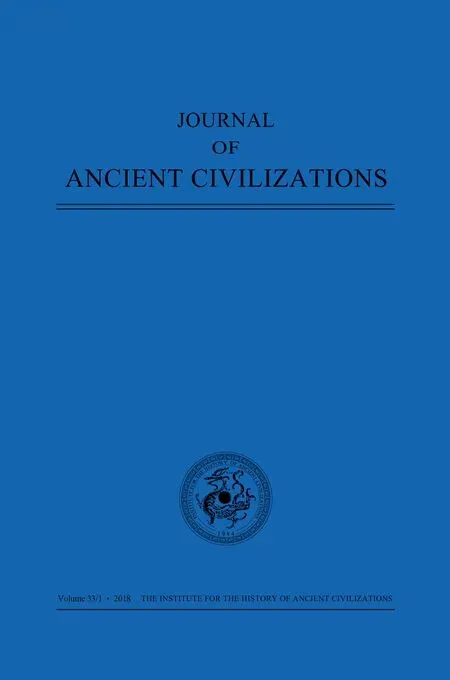ABSTRACTS
Michela PICCIN (IHAC, NENU, Changchun)MORTALITY AND FAME IN AKKADIAN TEXTS (pp. 1–25)
Not all topics can be treated in the same way. Some are too intimate or thorny to be discussed without precautions in our use of language. One of these topics is undoubtedly death, a timeless and placeless taboo in which psychological,religious, and social interdictions are embodied. The aim of this paper is to explore the linguistic devices that Akkadian speakers used to tone down the taboo and cope with death. To address the issue, written sources, belonging to different genres and time periods, are examined.
David A. FALK (CNRS, UBC, Vancouver)“MY PUTREFACTION IS MYRRH:” THE LEXICOGRAPHY OF DECAY,GILDED COFFINS, AND THE GREEN SKIN OF OSIRIS (pp. 27–39)
While the ancient Egyptian practice of mummification inhibited physical decomposition, the Egyptians believed that there was a liminal state during decomposition where the dead were vulnerable to spiritual attack. Spells and incantations were used as a measure to preserve the deceased by ritually converting and transforming the products of decomposition. This paper explores the lexicography of rot and decay in order to study idiomatic expressions that anticipate outcomes that preserve the dead, reverse decomposition, and transfigure the deceased. The paper relates the ritual conversion presumed through some of the Coffin Texts to religious beliefs and practices that include apotheosis, gilded coffins, and the green skin of Osiris.
Mohamed Gamal RASHED (Damietta University)A NEW CONCEPT AND EXHIBITION PROGRAM FOR THE EGYPTIAN MUSEUM IN CAIRO (pp. 41–82)
This article presents a new concept for the future permanent display of the Egyptian Museum in Cairo, and discusses different practical ideas and concepts.Throughout the discussion, recent challenges and opportunities are considered,particularly the conflicts and duplication among the three major museums in Greater Cairo, the Egyptian Museum (EMC), the Grand Egyptian Museum(GEM), and the National Museum of Egyptian Civilization (NMEC). Different ideas are introduced, while selected options are then discussed. The author argues his suggestion to develop a concept that combines archaeological fieldwork,masterpieces, and visible storage in a presentation that varies from aesthetic,contextual and systematic display. This comes from the author’s understanding of the expected audiences, their interests, the strengths of the collection, the exhibition space, and EMC’s mission.
Houliang LÜ (Institute of World History, Chinese Academy of Social Sciences)DRAMATIC ELEMENTS IN POLYBIUS’ GENERAL HISTORY: AN ANALYSIS BASED ON THE MODEL OF CONNECTIVITY OF THE ANCIENT MEDITERRANEAN WORLD (pp. 83–112)
The Histories composed by Polybius is the only extant historical work from the ancient world which directly criticizes the historical tradition “tragic history.” Modern researchers generally agree that the reflections and criticism of Polybius on tragic history is one predominant feature of his “objective history.”Nevertheless, in the structure of general history in The Histories, Polybius himself also uses certain dramatic elements, such as stage props, selection of historical materials, fictional asides and the tragic theme of tyche, to rationalize Romans’dramatic conquest of the whole Mediterranean within fifty-three years. Polybius’failure to exclude dramatic elements from The Histories reflects the limitation of the historiographic thoughts of Greek historians as well as the complex relationship between literature and history in the Hellenistic cultural context.
BIBLIOGRAPHICAL SURVEY: GLOBAL HISTORY
At present, Global, Entangled and Transcultural History are commonly used key words in modern history, and also ancient history has partly taken over their ideas and concepts. With the present bibliographical survey of recent literature on the topic with regard to antiquity, the chances and challenges of conducting research under this perspective are examined.
Raimund SCHULZ / Uwe WALTER(University of Bielefeld)
GLOBAL HISTORY, ENTANGLED AREAS, CULTURAL CONTACTS –AND THE ANCIENT WORLD(pp. 115–130)
Xueliang SHI(IHAC, NENU, Changchun)
REVIEW OF VICTOR H. MAIR ET AL. (EDS.). 2014. RECONFIGURING THE SILK ROAD: NEW RESEARCH ON EAST-WEST EXCHANGE IN ANTIQUITY. PHILADELPHIA, PA: UNIVERSITY OF PENNSYLVANIA MUSEUM OF ARCHAEOLOGY AND ANTHROPOLOGY(pp. 131–135)
 Journal of Ancient Civilizations2018年1期
Journal of Ancient Civilizations2018年1期
- Journal of Ancient Civilizations的其它文章
- A NEW CONCEPT AND EXHIBITION PROGRAM FOR THE EGYPTIAN MUSEUM IN CAIRO
- BOOK REVIEW
- GLOBAL HISTORY, ENTANGLED AREAS, CULTURAL CONTACTS –AND THE ANCIENT WORLD1
- DRAMATIC ELEMENTS IN POLYBIUS’ GENERAL HISTORY:AN ANALYSIS BASED ON THE MODEL OF THE CONNECTIVITY OF THE ANCIENT MEDITERRANEAN WORLD
- “MY PUTREFACTION IS MYRRH:”THE LEXICOGRAPHY OF DECAY, GILDED COFFINS,AND THE GREEN SKIN OF OSIRIS
- Editors’ Note
